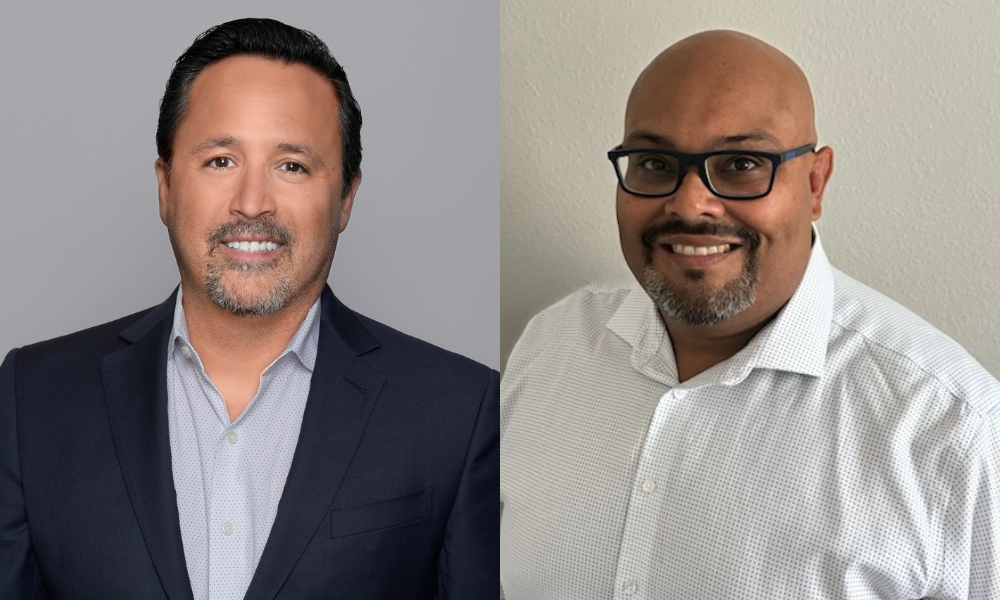What should LOs, brokers keep top of mind?

Hispanic homeownership is on the rise in the United States – and the non-QM space is poised to continue growing among that buyer segment, according to two executives in the sector.
Even amid a challenging housing market and mounting affordability hurdles, homeownership among the US’s Hispanic population hit the 49.5% mark last year, according to the National Association of Hispanic Real Estate Professionals (NAHREP), posting its largest single-year gain for 18 years.
Speaking with Mortgage Professional America, Carlos Betancourt (pictured top left) and Artie Barrera (top right), account executives at wholesale lender Luxury Mortgage, said non-QM solutions had seen significant uptake among Hispanic homebuyers in recent times.
That “dramatic” expansion, according to Betancourt, has arrived in part thanks to growing understanding among a wide swathe of borrowers, not just in the Hispanic community, of the viability non-QM loans can offer. “If you’re a self-employed borrower, there are other alternatives to the traditional way of qualifying, which is what non-QM aims to fill – a void,” he said.
Read more: How to get a home mortgage for self employed clients
“After that, you see our community – the Hispanic community – follow along, and a lot of that has come with interactions with the agents and some outreach that we’ve done a lot over the years to let our partners know that these programs are available. It’s a lot of education more than anything, and it’s finally showing.”
While some mortgage professionals and borrowers may have viewed the space with a degree of trepidation having been stung by the subprime bubble that precipitated the global financial meltdown in the late 2000s, Barrera said plenty of effort had gone into highlighting the significant differences between non-QM and those far riskier loans.
That’s served to ease fears about the sector, he said. “The borrower has to have reserves and we have to see a consistent way of them making income – an alternative route [when] banks are not giving them any options to become homeowners,” he said.
“Once we got past that and people started seeing that this is real, and we’re getting people in homes, that’s when it clicked. And now as a result of that, here we are. We have a big, booming market, year over year it’s growing, and we have a lot of competitors.”
US home sales rose by 0.6% in July, but were down 2% year-over-year, marking the lowest July sales since Redfin began tracking in 2012. Nicole Stewart from Redfin noted that some buyers are hesitant due to concerns about the political climate.
— Mortgage Professional America Magazine (@MPAMagazineUS) August 20, 2024
Read more: https://t.co/zXzFDiFgwu
What’s top of mind for mortgage professionals in catering to Hispanic borrowers?
In 2021, over 12% of Hispanic households were unbanked (compared with about 2.5% of the white population), and Betancourt noted lower trust in banks among that community stemming from their countries of origin. “There’s a little bit of distrust in what they’re used to. The concept of a mortgage is really new to [many],” he said.
“For the first four or five years in our non-QM space, it was all about the education of the Hispanic community that these programs are available – lose the distrust of the banking system and the mortgage process and sharing documentation. It’s an education shift that we’ve done as an industry to let our customers know that the old way of thinking is completely different here in the States.”
Marketing outreach in Spanish has also been an effective means of bridging the gap between the non-QM space and Hispanic homebuyers, according to Betancourt. For Barrera, top of mind is also marketing and communicating in a careful and responsible way to ensure that the borrower is getting into the right program for them. “We have to make sure that things are clear and that we’re not… bringing someone in and giving them the wrong product,” he said. “We have to make sure we’re always clear about what’s on the table.”
What’s in store for Hispanic homeownership in the US?
Ultimately, the space is one that’s only likely to continue growing – especially with hundreds of thousands of new Latino owner-households emerging by the year, according to NAHREP.
Betancourt said education will remain top of mind for Luxury in its efforts to cater to that segment, and urged brokers and loan officers to step up their efforts to make homeownership a reality for the Hispanic population. “We’re always trying to take a step ahead, because we’ve just seen that wave,” he said. “A lot of them are young borrowers, and they’re getting ready to buy their first home.
“So they’re seeing that their wealth is improving, generational wealth. They understand leaving a property for your kid is lifechanging. So I think the future is bright for companies that [are looking for] that opportunity.”
Stay updated with the freshest mortgage news. Get exclusive interviews, breaking news, and industry events in your inbox, and always be the first to know by subscribing to our FREE daily newsletter.



